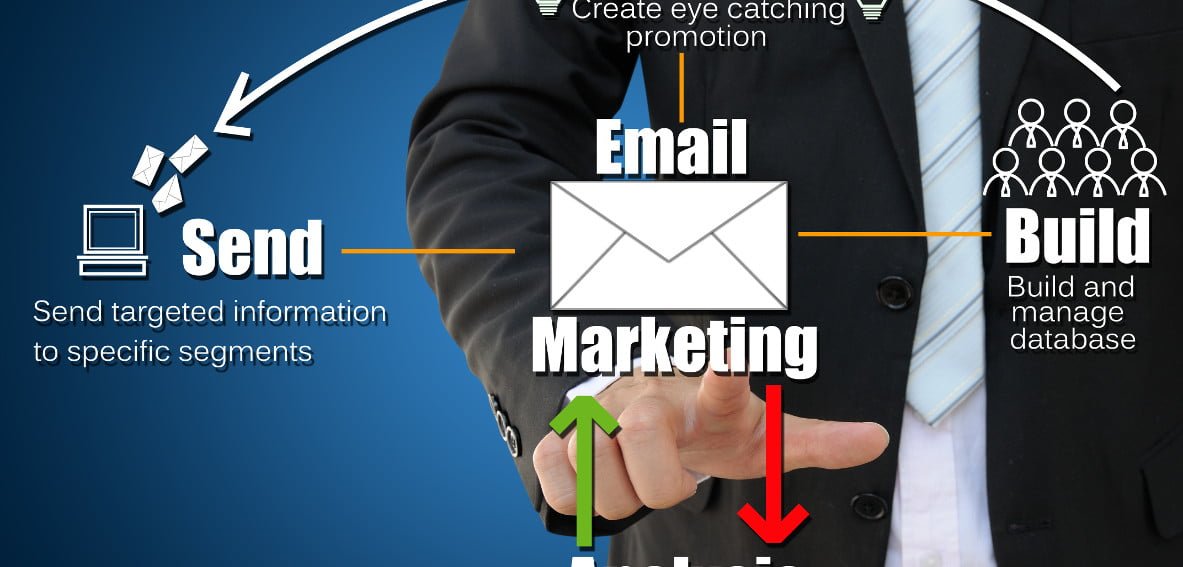Email marketing has proven to be one of the most trusted methods in communicating with consumers and prospects. But just like any other marketing strategy, email won’t move the needle when you don’t do it right. The good thing about email is that you can measure KPIs or key performance indicators that show you what you are doing right and improve on what you are not good at.
Email performance can be measured by using different tools. With the right analysis of KPIs, you can grow your email marketing efforts by correcting your mistakes and taking the right steps to improve your performance. Here are important performance indicators that you should be keeping an eye on.
Bounce Rate
Email bounce rates show the percentage of emails that were not delivered. They can be grouped into hard bounces and soft bounces. Soft bounces are usually caused by full inboxes or server issues. Contacts that send a soft bounce should be retained in your contact list for now, but you should keep an eye on them for future problems.
Hard bounces, on the other hand, are an issue that needs to be addressed. Hard bounces occur when you send an email to a domain that doesn’t exist, or your email is being classified as junk or spam. If you don’t want your email to be blocked completely, you should remove bounced addresses from your email list.
Keeping track of bounce rates lets you know about permanently unreachable emails. A high bounce rate is usually due to sending emails to inactive accounts. T’s pretty rare to have a 100% delivery rate for emails. The accepted bounce rate is at 2%. A 5% bounce rate shows that there are issues that need to be fixed.
Lower bounce rates are ideal for any business because it means that more people are receiving your messages. It’s vital to know why your messages are not being sent because they can impact your overall ROI.
Email Open Rate
If you are one of those who believe that the email open rate is based on the number of people who open your email, you are in for a surprise.
In reality, an email is only counted as opened when two things happen: the receiver must click a link in the email, and the reader enables images to be displayed in the preview pane or full view. Email service providers calculate your email open rates for you. They do it by taking the number of people who open the email and divide it by the number of emails sent that did not bounce.
Emails that are not delivered are not included in the open rate percentage. In 2020, the average email open rate across all industries was 21.3%. However, when you check per industry, there is a big difference depending on which industry you are in.
Constant Contact reports that the Education industry averages are 25.5% while the marketing industry is 14.6%. This means that you should not worry so much if your percentage doesn’t meet the all-industry average; what’s important is your email campaign is getting the results that you expect.
As a marketer, you should not ignore mobile and tablets because email open rates on these devices have grown by more than 100% since 2011. 81% of all emails today are now opened and read on mobile devices. If your emails are not optimized for mobile, 80% of readers delete them at once.
Imagine the number of emails deleted and sales lost. It’s time to fix your email layout and make it optimized for mobile devices. If you need help, you can ask our email experts for assistance. They would gladly help you with your email optimization for mobile needs.
Click-Through Rate
One of the biggest challenges email marketers face is not email deliverability or open rates but email engagement. Not everyone who opens an email reads all the content much more click on something on the email.
Based on data from Ascend 2, 53% of email marketers have a problem with low click-through rates. Email click-through rates show you how many people clicked on a CTA, hyperlink, or image in your email.
This is calculated by taking the total number of clicks for your email and dividing the number by the total number of delivered messages. Click through rates show you the engagement of your email and allows you to measure performance in the following areas:
- Media type
- Email content
- Link count
- Link placement
- Overall interest
The right analysis of data can help you determine areas of improvement for your future campaigns. A high click-through rate means that your email campaign is working because readers are taking action. People respond to emails that are easy to read on their devices. If you received an email that doesn’t appear right on your mobile, you would delete it at once.
Mobile optimization is the key once again, which is why it’s no surprise to find out that 80% of brands always send mobile-optimized emails. Mobile use is trending upward, and the growth will continue. If you have not optimized your emails for mobile yet, now is the best time to do so.
Click to Open Rate
click-to-open rates measure opens and click to give email marketers a better idea of a campaign’s overall performance. Click to open rate data shows how your content is performing by giving you data from subscribers who open your email. This shows how relevant your email is, as engagement from a subscriber has led them to take the next step in developing a relationship with your brand.
A successful email campaign takes time and effort. This involves fine-tuning your message to get a more engaged response. Click to open rates can help you make the right decisions and corrections with your content. What’s the use of getting a high number of subscribers opening your emails but don’t click on the CTA? CTOR should not be overlooked; they can be more useful than open rate and click-through rate when you boil down to it.
Unsubscribe Rate
In email marketing, when a person unsubscribes to your email list, it means they want their email removed from your list so that they won’t receive further emails from you. Email campaigns usually include an unsubscribe button or link below to give subscribers an option to remove themselves when they want to.
As an email marketer, you can be both annoyed and thankful for unsubscribe rates. On the one hand, it’s always painful when people are not interested in your message, but you are retaining people who want to know more about your brand on the good side. Just look at it as a self-cleaning process to make you feel better.
On average, you should have an unsubscribe rate of below 0.5% for your email campaign, rates above this number mean that you have your work cut out for you. It’s normal for any email campaign to have several subscribers who will eventually click on the unsubscribe link.
Roll with the punches and move forward. Who wants to have dead weight hanging around? The main purpose of an email marketing campaign is to generate leads that convert to sales. You are not just sending emails for any other reason but sales.
Every email marketer wants a huge email list, but you must keep in mind that a large list doesn’t mean that they will all convert or buy. The truth is, only a third of your email subscribers are bound to convert, so the rest of your subscribers are just hanging out but never convert. Wouldn’t it be better if they unsubscribe?
Quality over quantity would always be a nicer option, and getting rid of the junk by getting those would keep your email list healthy.
Spam Complaint Rates
Did you know that an email that receives a large number of complaints can result in your email being blocked by your ISP? Spam complaints are reports made by recipients against emails that they don’t want to see in their inbox.
Most email providers include a “Spam” button in the inbox to allow users to report unwanted emails. People click this button for various reasons; they may not know the sender’s identity, or they may want to unsubscribe to an email list.
Recipients who report your email as spam are unsubscribed from your list at once. You won’t be able to send emails to them anymore. If complaints about a single email go above industry standards of 0.5%, your account may be suspended. No one is immune from spam complaints; even the legit marketers get them.
While it is close to impossible to have a zero spam complaint rate, you should exert every effort to keep your numbers low to increase your inbox placements. Spam complaints also harm your sender’s reputation and impact deliverability rates. If you need help lowering your spam complaint rates, you can talk with our email experts and ask for advice.
Need help with your Email Marketing efforts?
Email marketing is an essential part of your digital marketing efforts. If you want to take your email marketing to another level, we can help. The beauty of email over other marketing channels is how you can measure its performance in every respect. Without any metrics to measure, you won’t know if your email campaign is successful or not. Knowing how to analyze metrics can help avoid misinterpretation of data and making bad decisions.
If you need expert assistance in tracing your email marketing KPIs, get in touch with us today. We can also provide strategies for growing your list, open rates, and giving you more conversions. Please send us a message or give us a call today. Our email marketing experts are ready to take your call.











